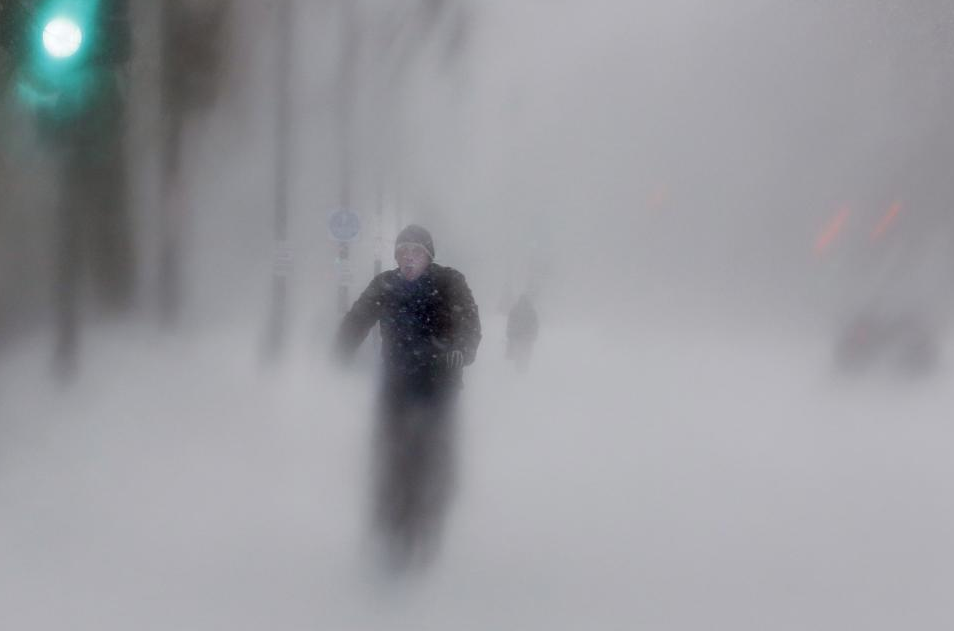The caption says, “A man rides his bike up Beacon Street during a blizzard in Boston, Massachusetts January 27, 2015.”
One might wonder why this photograph would be featured among the images of the day. It is largely a study in blurred perception, an example of not seeing clearly, and of things that can be easily missed without loss. I am no worse off for not seeing the details of the solitary commute of an anonymous individual in a nearly deserted street on a winter’s day somewhere in Boston. The lack of clarity here is not a lesson about political ideology, media manipulation, costly ignorance, or a failure of concern. A January blizzard made both travel and vision difficult; no news there, and nothing to merit a second look.
The selection becomes more complicated in you consider that the image is even less likely to be featured in a slide show of winter’s beauty. Think “National Geographic” and many wonderful images will come to mind: the lone evergreen standing between snow-covered hills, red holly berries on black twigs glazed in ice, the low sun glinting through the distant treeline across a frozen lake. . . . or a bustling city transfigured into enchanted silence by incandescent snowflakes falling softly to grace every surface of metal and stone.
Whatever your images, they probably don’t include a blurred figure who seems to be both moving and stationary, and both solid and ethereal, against a background that is both familiar in its outline–street, streetlight, trees, pedestrian–and yet so hazy as to be remote or unrecognizable. Once we have been told that he is riding a bicycle, the scene may become a bit uncanny: what it is supposed to be, but oddly not quite right. Somewhat like a doppleganger, in fact, or any image, for that matter.
Let me suggest that this photograph is a study in public perception, in several senses. First, it suggests that much of what we can’t see here we never really see, as it is part of the taken for granted background that we slide over in ordinary perception. (If the bike had been clearly visible, how much of it would you have been able identify if tested a minute later?) It’s not that we can’t see those things, or even that we should, but that we don’t need to for the ways of seeing that are dominant (and useful) in public spaces as opposed to more expert or intimate settings. Thus, the photograph marks, by blurring, some of what would be in the optical unconscious of photography: what the ordinary observer would not notice but would still be captured by the camera.
Second, the photo suggests that much of what we see clearly is actually ghostly–a virtual reality of images that we take for granted as a real world. The public realm is not only the actual spaces that we inhabit with strangers, but also those virtual spaces that we inhabit as if in public, often through media representations of strangers in distant and effectively anonymous settings. (Ask yourself why “Beacon Street” was given as the sufficient descriptor for the intersection being shown: the street runs for miles, while similar photographs could be taken in many other cities and towns around the globe. This is a photograph of a symbolic place.) The traffic light signals “public domain,” and the figure on the bike is not much more distinctive. Blurred signals and a spectral messenger; sometimes that’s all you need.
A ghost is defined as a spirit in bodily form, and as a semblance or trace of something, and as a secondary and usually faint or blurry image. All of these concepts can double as characterizations of photography. Some would say they are failings of the medium, but I see it otherwise. Photography’s connections with the spirit world are exactly why it proves to be such a useful medium for modern, liberal-democratic public cultures. As we see ghosts, we see ourselves.
Photograph by Dominick Reuter/Reuters.

Discussion